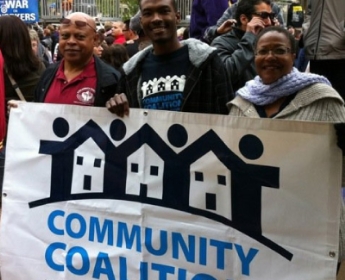Apr 27 2012
How Has Los Angeles Changed, 20 Years After the 1992 Unrest?
 Sparked by public anger, federal charges were eventually brought against the police officers, accusing them of violating King’s civil rights. About a year after the LA Uprising, Officer Laurence Powell and Sergeant Stacey Koon were found guilty while the other two were acquitted. While local communities braced for more violence, the streets remained largely calm.
Sparked by public anger, federal charges were eventually brought against the police officers, accusing them of violating King’s civil rights. About a year after the LA Uprising, Officer Laurence Powell and Sergeant Stacey Koon were found guilty while the other two were acquitted. While local communities braced for more violence, the streets remained largely calm.
In the months and years that followed, political commentators on the right increasingly linked the incident to a “poverty of values,” to quote then Vice President Dan Quayle. President George Bush asserted that the actions during the uprising were “purely criminal.”
However, a “Special Committee of the California Legislature” was formed by the state in the wake of the incident, to study the causes. Their report, entitled, “To Rebuild is Not Enough,” concluded that rampant poverty, and a systemic lack of economic opportunities combined with pervasive police brutality sparked the violence. The report made a number of specific recommendations that included economic development, community self-determination, police accountability, and improvements in housing, education, and transportation in South Los Angeles.
The LA Board of Police Commissioners also crafted a report called The City in Crisis, addressing the lack of preparedness among LAPD when the uprising began, as well as community-police relations.
Today, twenty years later, South Los Angeles, or South Central as it used to be called, has transitioned from a majority black-inhabited area, to a majority Latino neighborhood.
GUESTS: Joanne Kim, COO (Chief Operating Officer), Leslie Cooper, Development Director, and Maria Muniz, Community Organizer, with the Community Coalition
Visit www.cocosouthla.org for more information.
Community Coalition Events Commemorating April 1992 Unrest:
The State of South L.A.: Community Dialogue on Saturday, April 28th from 10 a.m. – 12 p.m. at First AME Church located at 2270 S. Harvard Blvd. The dialogue, co-hosted by First AME Church, will feature panelists Congresswoman Karen Bass, vice president of the Board of Police Commissioners and former president of the L.A. Urban League John Mack, PolicyLink director Mary Lee, director of the USC PERE program Manuel Pastor, and community experts to reflect on the progress made in the areas of economic inequality and police relations.
On Sunday, April 29th, the South L.A. Rises: Community Fair and Rally will take place from 1-4 p.m. at the vacant lot of 81st and Vermont Ave. Hundreds of residents will rally to bring attention to the vacant lots on Manchester and Vermont, the focal points for the unfulfilled promises made to rebuild South L.A. in the aftermath of the riots. The fair will bring together community, faith, labor and elected leaders including Mayor Antonio Villaraigosa to bring attention to the critical issues still facing South L.A. and the work we still need to do as a community.
Comments Off on How Has Los Angeles Changed, 20 Years After the 1992 Unrest?




